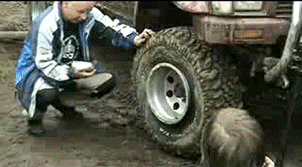








[img]http://i109.photobucket.com/albums/n52/havlik1/permie%20pics2/permiepotrait3pdd.jpg[/img]
"One cannot help an involuntary process. The point is not to disturb it. - Dr. Michel Odent




 ) and let the coyotes eat it (in a reasonably confined area, not a cage) and get sick. Later (presumably when the coyotes would want another meal), they put some sheep into the confined area with the coyotes.
) and let the coyotes eat it (in a reasonably confined area, not a cage) and get sick. Later (presumably when the coyotes would want another meal), they put some sheep into the confined area with the coyotes. 
















[img]http://i109.photobucket.com/albums/n52/havlik1/permie%20pics2/permiepotrait3pdd.jpg[/img]
"One cannot help an involuntary process. The point is not to disturb it. - Dr. Michel Odent




My books, movies, videos, podcasts, events ... the big collection of paul wheaton stuff!








paul wheaton wrote:
I have a strong opinion about this and am having a healthy discussion with another party about it. So I wish to gather feedback from others on this topic without pushing in my own opinion.
While having livestock guardian animals is a rich topic, I would like to limit the discussion to two. Llamas and great pyrenees dogs and their ability to protect chickens from wildlife.
I'm tempted to convey what I know on the topic, but I'm concerned that that would expose my bias.
Anybody have experience with either? Or, hopefully, both? Can anybody share the pros and cons of having them as a working animal on a full farm eco system?
Gary




My books, movies, videos, podcasts, events ... the big collection of paul wheaton stuff!




paul wheaton wrote:
Gary,
At this time I am leaving the farm where I am. And one of the big reasons is that the land owners are dead set against getting a great pyr.
The great pyr I had was 3/4 great pyr and the rest was a bit of a mix that included anatolian. She wasn't nearly as big and she was damn good at her job!
So - you're a breeder?
Maybe you have some excellent stories to share?

Gary




My books, movies, videos, podcasts, events ... the big collection of paul wheaton stuff!




Gary








[img]http://i109.photobucket.com/albums/n52/havlik1/permie%20pics2/permiepotrait3pdd.jpg[/img]
"One cannot help an involuntary process. The point is not to disturb it. - Dr. Michel Odent












My books, movies, videos, podcasts, events ... the big collection of paul wheaton stuff!








My books, movies, videos, podcasts, events ... the big collection of paul wheaton stuff!

















[img]http://i109.photobucket.com/albums/n52/havlik1/permie%20pics2/permiepotrait3pdd.jpg[/img]
"One cannot help an involuntary process. The point is not to disturb it. - Dr. Michel Odent








Alisa wrote:
and started on a rattlesnake antivenom.
[img]http://i109.photobucket.com/albums/n52/havlik1/permie%20pics2/permiepotrait3pdd.jpg[/img]
"One cannot help an involuntary process. The point is not to disturb it. - Dr. Michel Odent




My books, movies, videos, podcasts, events ... the big collection of paul wheaton stuff!








My books, movies, videos, podcasts, events ... the big collection of paul wheaton stuff!




[img]http://i109.photobucket.com/albums/n52/havlik1/permie%20pics2/permiepotrait3pdd.jpg[/img]
"One cannot help an involuntary process. The point is not to disturb it. - Dr. Michel Odent
















 ... that was pretty infuriating...
... that was pretty infuriating...







Alisa wrote:
My only experience is with LGD's, well, actually we did have a very endearing donkey for a few years. While he was charming, and he did warn me when he spotted the neighbor's pigs at the fence, he was prone to overeating any/all available goat supplements, and he liked to sleep at night.
I've found LGD's to be exceptional at their job and a pleasure to work with, but they do require management. Fortunately, they add far more to my enterprise than what they require (we literally could not have small livestock here, or do vegetation management jobs without them). Three cheers for the dogs!
As a closing note, I don't know all the circumstances, but three llamas were killed (at the same location on a single night) by a mountain lion last year in Mendocino County, CA.
http://wildernessreturn.wordpress.com/
my wilderness return story and adveture

|
a tiny voice in my head can't shut up about this tiny ad:
GAMCOD 2025: 200 square feet; Zero degrees F or colder; calories cheap and easy
https://permies.com/wiki/270034/GAMCOD-square-feet-degrees-colder
|





